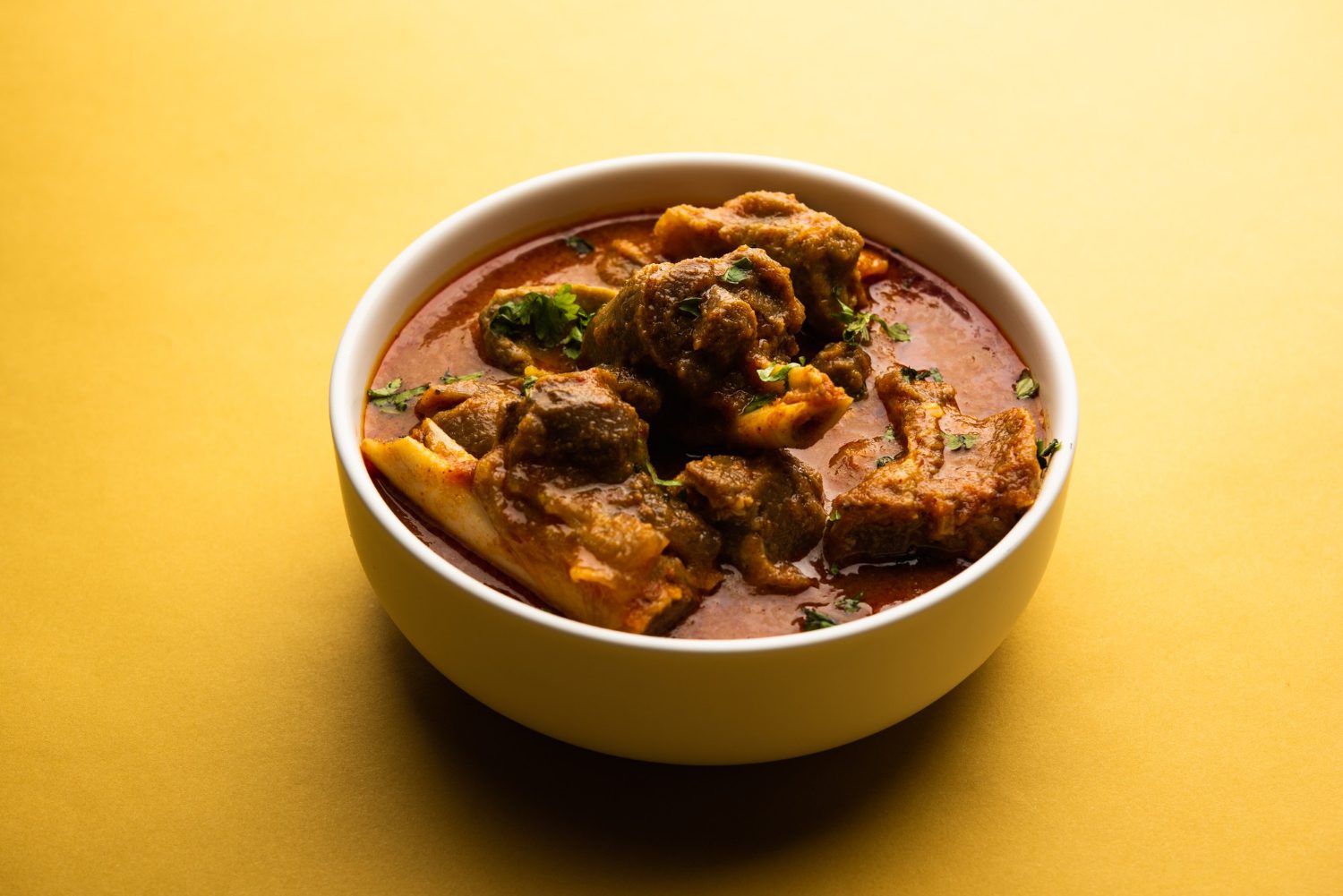There’s something irresistibly captivating about a well-cooked Spicy Mutton Curry Delight. It’s a dish that tantalizes the senses and warms the soul, combining tender pieces of mutton with a symphony of spices to create a culinary masterpiece. Whether you’re a seasoned home cook or a novice in the kitchen, this article will guide you through the journey of making an unforgettable spicy mutton curry.
History of Mutton Curry
Origins of Mutton Curry
Mutton curry has a rich and diverse history that dates back centuries. Originating in the Indian subcontinent, this dish has become a staple in many households. Each region has its unique take on the recipe, with variations in the spices and cooking methods used.
Regional Variations
From the robust Rogan Josh of Kashmir to the fiery Chettinad curry of Tamil Nadu, the regional variations of mutton curry are vast and flavorful. Each version tells a story of its cultural heritage, making mutton curry a truly global dish.
Health Benefits of Mutton
Nutritional Profile of Mutton
Mutton, particularly from young sheep, is a rich source of high-quality protein, vitamins, and minerals. It’s packed with essential nutrients like iron, zinc, and B vitamins, making it a valuable addition to a balanced diet.
Benefits of Spices in Curry
The spices used in mutton curry are not just for flavor; they also offer numerous health benefits. Turmeric, for example, has anti-inflammatory properties, while cumin aids in digestion. The combination of these spices can contribute to overall well-being
Ingredients for Spicy Mutton Curry
Main Ingredients
To create the perfect spicy mutton curry, you’ll need quality mutton, onions, tomatoes, garlic, ginger, and a variety of spices. Freshness is key, so opt for the best ingredients you can find
Spices and Seasonings
The magic of mutton curry lies in its spices. You’ll need turmeric, cumin, coriander, red chili powder, garam masala, and whole spices like bay leaves, cloves, and cinnamon sticks. These spices create the depth and complexity of flavor that defines a great mutton curry.
Choosing the Right Mutton
Tips for Selecting Fresh Mutton
When selecting mutton, look for meat that is a deep red color with a fine texture. It should have a fresh smell and be free of any discoloration. The right cut of meat is crucial for achieving the best results.
Different Cuts of Mutton
Different cuts of mutton can yield different results in your curry. Shoulder cuts are ideal for slow cooking, while leg cuts can also be used for a tender and flavorful dish. Choose the cut based on your cooking method and preference.
Preparation of Ingredients
Marinating the Mutton
Marinating the mutton is a crucial step. Combine yogurt, lemon juice, turmeric, and salt to tenderize the meat and enhance its flavor. Let it marinate for at least a few hours, or overnight if possible.
Prepping Vegetables and Spices
Chop the onions, tomatoes, garlic, and ginger finely. Measure out all the spices beforehand to ensure a smooth cooking process. Prepping your ingredients in advance makes the cooking process more efficient and enjoyable.
Cooking Techniques
Traditional Methods
Traditionally, mutton curry is slow-cooked over a low flame, allowing the flavors to meld together beautifully. This method requires patience but rewards you with a rich, flavorful curry.
Modern Techniques
For those short on time, pressure cooking is an excellent alternative. It significantly reduces the cooking time while still producing a delicious curry. Slow cookers are another modern option, allowing you to set it and forget it.
Step-by-Step Recipe
Detailed Cooking Instructions
- Heat oil in a large pot and add whole spices (bay leaves, cloves, cinnamon sticks).
- Add onions and sauté until golden brown.
- Stir in garlic and ginger paste and cook for a minute.
- Add tomatoes and cook until they soften.
- Add marinated mutton and cook until it browns.
- Add spices (turmeric, cumin, coriander, red chili powder) and mix well.
- Pour in water or broth, cover, and let it simmer until the mutton is tender.
- Finish with garam masala and fresh cilantro before serving.
Tips for Perfecting the Curry
- Patience is key: Allow the curry to simmer slowly for the best flavor.
- Adjust the spices: Tailor the spice levels to your preference.
- Consistency: If the curry is too thick, add more water; if too thin, let it reduce.
Serving Suggestions
Best Accompaniments
Spicy mutton curry pairs wonderfully with steamed basmati rice, naan, or roti. These accompaniments help balance the robust flavors of the curry.
Presentation Ideas
Serve your mutton curry in a rustic bowl, garnished with fresh cilantro and a wedge of lime. This not only enhances the flavor but also adds a touch of elegance to your presentation.
Pairing with Side Dishes
Rice and Bread Options
Basmati rice, jeera rice, or even a simple pulao can complement your curry. For bread lovers, garlic naan, plain naan, or roti are perfect choices.
Beverage Pairings
A cool yogurt-based drink like lassi or a refreshing beer can help temper the heat of the curry, providing a pleasant balance.
Variations of Mutton Curry
Regional Twists
Experiment with different regional spices and ingredients to create your own version of mutton curry. Try adding coconut milk for a Kerala twist or mustard oil for a Bengali flavor.
Creative Additions
For a unique spin, consider adding vegetables like potatoes or peas. You can also experiment with different herbs to add a fresh twist to the traditional recipe.
Common Mistakes to Avoid
Cooking Pitfalls
Avoid overcooking the mutton, as it can become tough. Ensure that your spices are fresh and not stale, as this can affect the flavor.
Tips for Success
- Fresh ingredients: Always use the freshest ingredients possible.
- Correct heat: Maintain the right heat level to avoid burning the spices.
- Consistency: Achieve the perfect consistency by adjusting the liquid levels.
Storing and Reheating Mutton Curry
Best Practices for Storage
Store leftover mutton curry in an airtight container in the refrigerator. It can last for up to three days and often tastes better the next day as the flavors develop.
Reheating Tips
Reheat the curry gently on the stove or in the microwave, adding a splash of water if necessary to restore the consistency.
Conclusion
In the world of culinary delights, Spicy Mutton Curry stands out as a dish that combines tradition, flavor, and comfort. It’s a hearty meal that brings people together, celebrating the rich heritage of spices and the succulent taste of mutton. Whether you’re cooking for a family dinner or a special occasion, this curry is sure to impress. So, roll up your sleeves and dive into the world of mutton curry – your taste buds will thank you!
Frequently Asked Questions
Yes, goat meat can be used as a substitute for mutton in this curry.
Reduce the amount of red chili powder and add a dollop of yogurt to mellow the heat.
Marinating helps tenderize the meat and enhance flavor, but if you’re short on time, you can skip it.
Absolutely! Mutton curry often tastes better the next day as the flavors have more time to meld.
You can use buttermilk or a mixture of lemon juice and water as alternatives.






